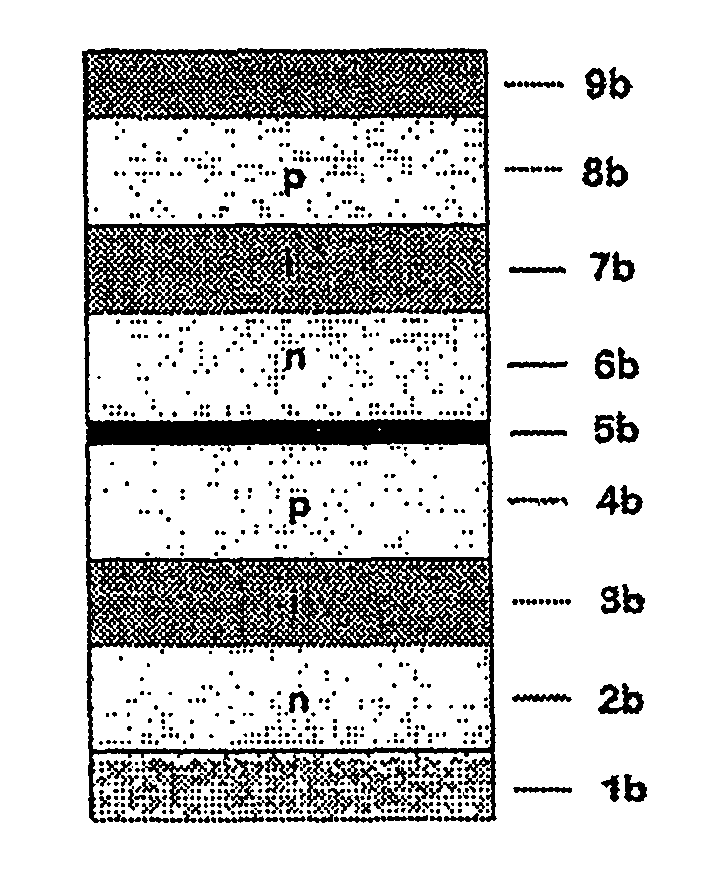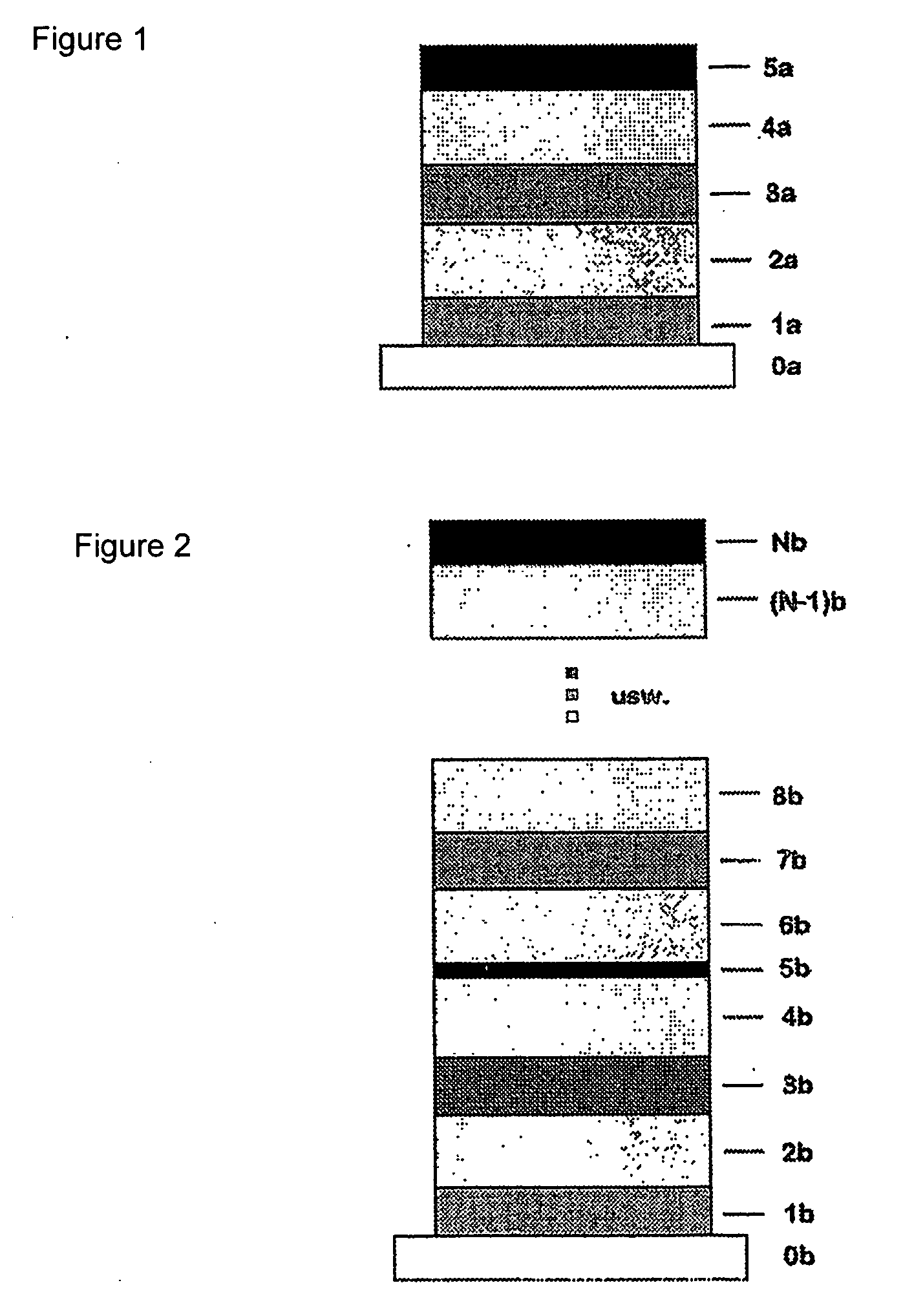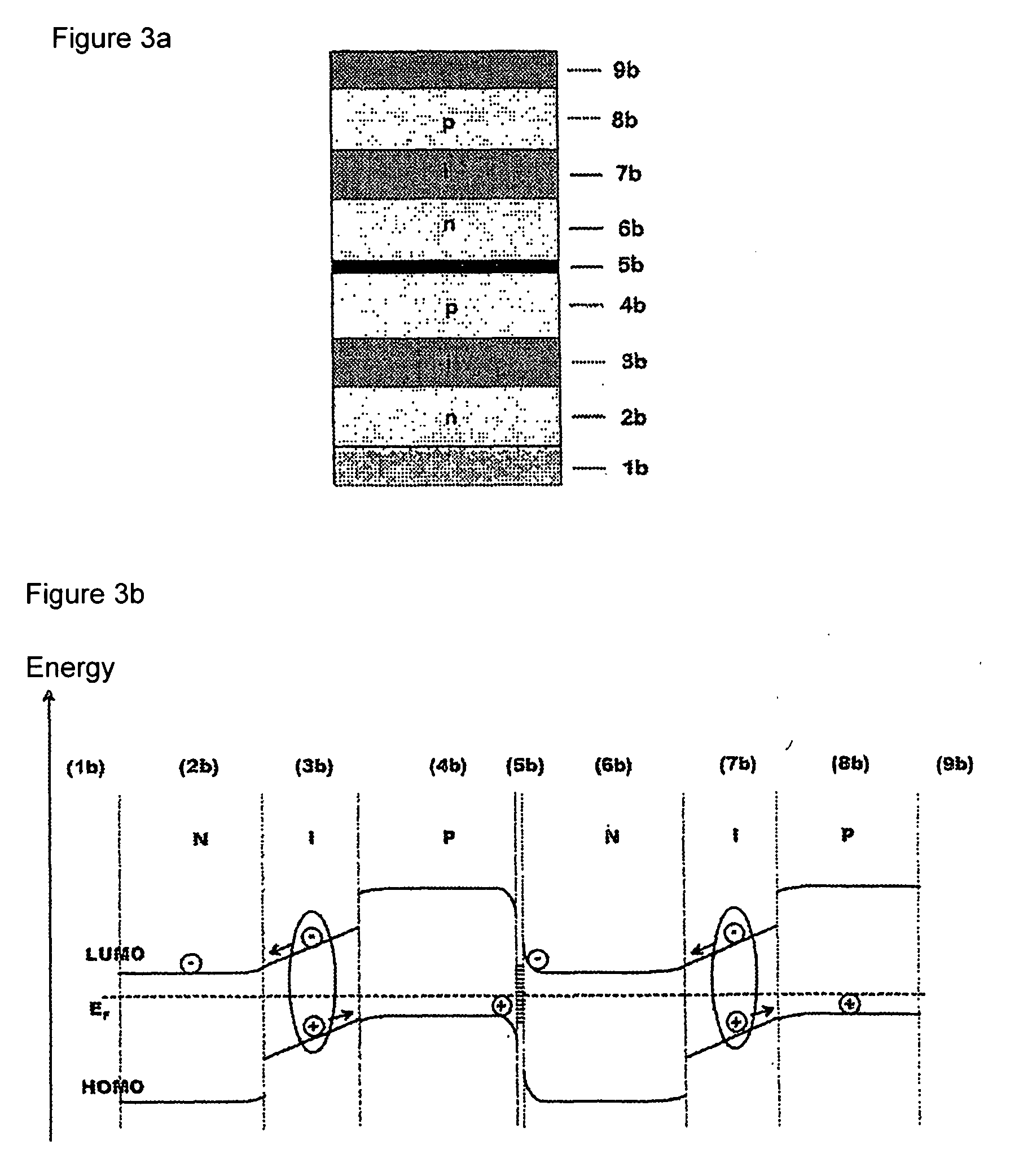Photoactive component with organic layers
a technology of organic materials and components, applied in the field of photoactive components with organic layers, can solve the problems of insufficient high fields, inability to use mono-crystalline organic materials, and inability to produce multiple layers with sufficient structural perfection, etc., and achieve the effect of reducing recombination losses
- Summary
- Abstract
- Description
- Claims
- Application Information
AI Technical Summary
Benefits of technology
Problems solved by technology
Method used
Image
Examples
Embodiment Construction
[0051] An advantageous embodiment shown in FIG. 1 comprising a structure for an organic solar cell corresponding to the invention according to the principle of an individual diode structure contains the following layers: [0052]0a.) Carrier, substrate, [0053]1a.) Base contact, mostly transparent, with optional organic or inorganic contact-making layer [0054]2a.) Charge carrier transport layer (wide-gap), p-doped or n-doped [0055]3a.) Active layer [0056]4a.) Charge carrier transport layer (wide-gap), n-doped or p-doped [0057]5a.) Top contact, optionally including organic or inorganic contact-making layer.
[0058] In accordance with this, the component advantageously consists of a pin or nip layer structure. The pin (or nip) structure for its part consist of two or more organic charge carrier transport layers respectively (2a and 4a) and a layer system (3a ) located between the organic layer (2a) and the organic layer (4a), in which the light is absorbed. Furthermore, the complete struc...
PUM
| Property | Measurement | Unit |
|---|---|---|
| optical absorption coefficients | aaaaa | aaaaa |
| thick | aaaaa | aaaaa |
| thick | aaaaa | aaaaa |
Abstract
Description
Claims
Application Information
 Login to View More
Login to View More - R&D
- Intellectual Property
- Life Sciences
- Materials
- Tech Scout
- Unparalleled Data Quality
- Higher Quality Content
- 60% Fewer Hallucinations
Browse by: Latest US Patents, China's latest patents, Technical Efficacy Thesaurus, Application Domain, Technology Topic, Popular Technical Reports.
© 2025 PatSnap. All rights reserved.Legal|Privacy policy|Modern Slavery Act Transparency Statement|Sitemap|About US| Contact US: help@patsnap.com



